Computer image modeling of pentamer packing in polyoma virus "hexamer" tubes
- PMID: 6089394
- PMCID: PMC4167661
- DOI: 10.1016/0304-3991(84)90064-0
Computer image modeling of pentamer packing in polyoma virus "hexamer" tubes
Abstract
Polymorphic assemblies of polyoma virus capsomeres that have been called "hexamer" tubes (because the morphological units are six-coordinated) are, in fact, built of pentamers, as is the icosahedrally symmetric T = 7d virus capsid. We have established the pentameric form of the capsomeres in the "hexamer" tubes by analysis of low-irradiation micrographs. Methods for generating computer image models with adjustable parameters have been developed to fit micrographs of negatively stained, flattened tubes. The image model has been refined to define the packing arrangement and substructure of the pentametric capsomeres in the superimposed top and bottom layers of the tube and to represent the differential flattening, lateral distortion and staining of the two sides. Information about the structure that is not directly accessible by conventional image filtering methods can be obtained by image modeling methods.
Figures
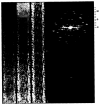


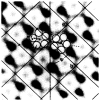
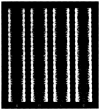





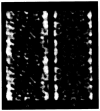
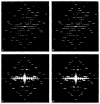
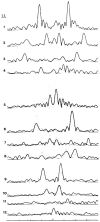
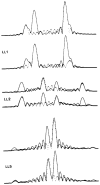
Similar articles
-
Polyoma virus 'hexamer' tubes consist of paired pentamers.Nature. 1983 Jun 2-8;303(5916):446-8. doi: 10.1038/303446a0. Nature. 1983. PMID: 6304526 Free PMC article.
-
The capsid of small papova viruses contains 72 pentameric capsomeres: direct evidence from cryo-electron-microscopy of simian virus 40.Biophys J. 1989 Feb;55(2):243-53. doi: 10.1016/S0006-3495(89)82799-7. Biophys J. 1989. PMID: 2540847 Free PMC article.
-
Polyoma virus capsid structure at 22.5 A resolution.Nature. 1982 Jan 14;295(5845):110-5. doi: 10.1038/295110a0. Nature. 1982. PMID: 6276752 Free PMC article.
-
Structure, attachment and entry of polyoma- and papillomaviruses.Virology. 2009 Feb 20;384(2):400-9. doi: 10.1016/j.virol.2008.12.022. Epub 2009 Jan 21. Virology. 2009. PMID: 19157477 Review.
-
Production and biomedical applications of virus-like particles derived from polyomaviruses.J Control Release. 2013 Nov 28;172(1):305-321. doi: 10.1016/j.jconrel.2013.08.026. Epub 2013 Aug 31. J Control Release. 2013. PMID: 23999392 Review.
Cited by
-
Pentagon packing models for "all-pentamer" virus structures.Biophys J. 1995 Aug;69(2):612-8. doi: 10.1016/S0006-3495(95)79938-6. Biophys J. 1995. PMID: 8527676 Free PMC article.
-
Virion assembly factories in the nucleus of polyomavirus-infected cells.PLoS Pathog. 2012;8(4):e1002630. doi: 10.1371/journal.ppat.1002630. Epub 2012 Apr 5. PLoS Pathog. 2012. PMID: 22496654 Free PMC article.
-
The thermodynamics of virus capsid assembly.Methods Enzymol. 2009;455:395-417. doi: 10.1016/S0076-6879(08)04214-6. Methods Enzymol. 2009. PMID: 19289214 Free PMC article.

